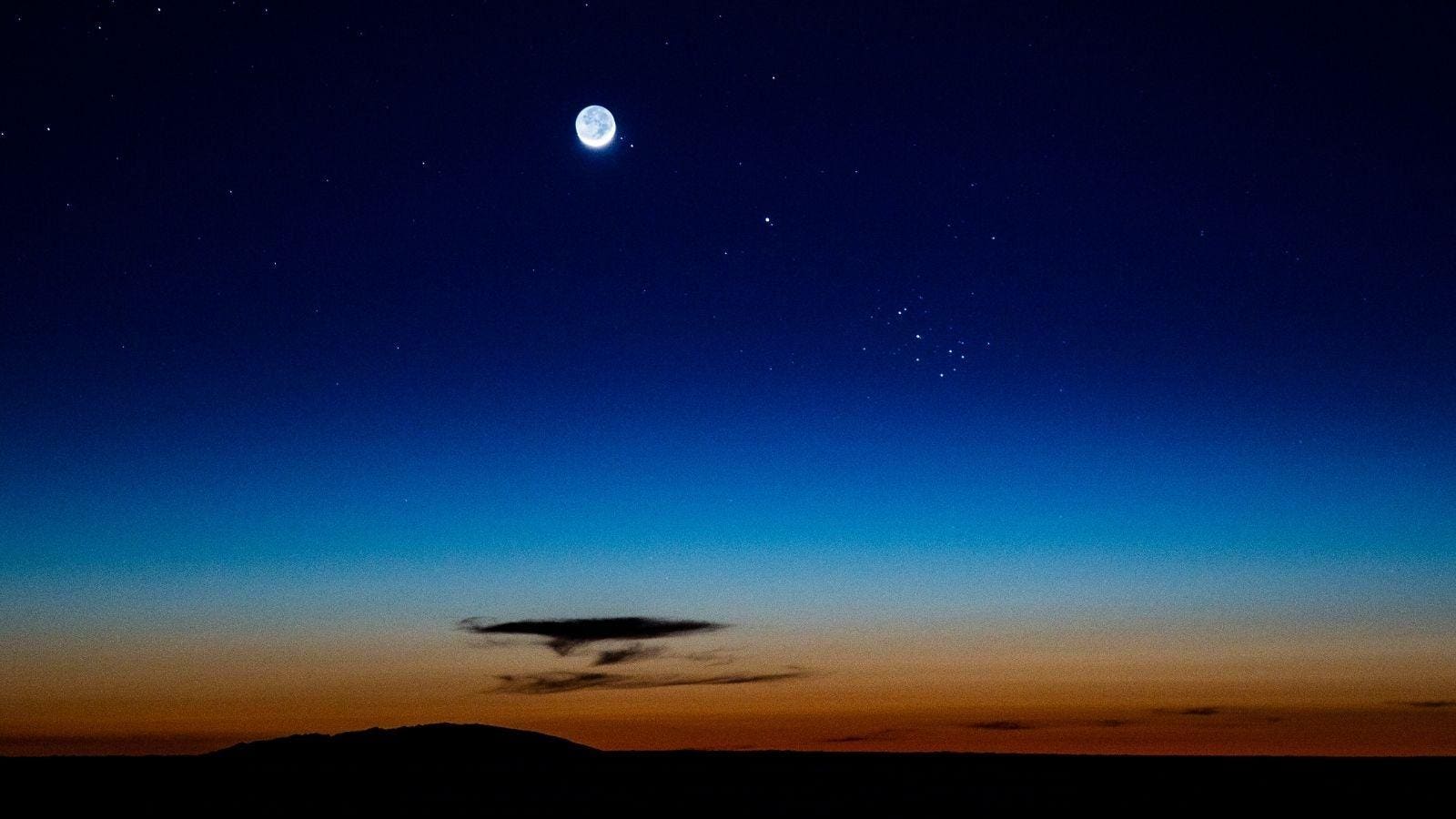A crescent Moon with the Pleiades below-right.
If you’re up early on Monday, June 23, you’ll be rewarded with one of the most elegant sights the sky has to offer this month — a slender crescent moon close to a sparkling cluster of stars called the Pleiades. Here’s everything you need to know about when and where to see them.
Where And When To Look
This is a celestial encounter that lacks convenience. To see it, you’ll need to head outside about an hour before sunrise and look toward the east-northeast horizon. As the sky lightens into dawn, you’ll see a slender 6%-illuminated waning crescent moon. Just above it will be the Pleiades — also known as the Seven Sisters or Messier 45 — barely half a degree away. That’s less than the width of an outstretched little finger held against the sky. You’ll also see Venus to the right of the pair, shining brilliantly at magnitude -4.1.
Monday, June 23: Crescent Moon And The Pleiades
What You’ll See
The moon won’t be particularly easy to see at first, thanks to only a slither of it being lit by the sun — you may need binoculars to spot it. If you need help, first find Venus, then look to its lower-left, slightly closer to the horizon. Once you do find it, you may notice its darkened night side softly illuminated by Earthshine — sunlight reflecting off our planet’s oceans, clouds and ice caps. Just above it and to the right, the Pleiades will sparkle like glitter, with six or seven stars visible to the naked eye (and many more through binoculars).
While the moon is about 238,000 miles away and Venus is about 150 times farther, the stars of the Pleiades lie roughly 444 light-years from Earth.
What you won’t see is Uranus. Despite it being about halfway between the moon and Venus, it’s far too small to see with anything other than a large telescope.
Earthshine on the crescent moon. (Photo by Frederic Larson/San Francisco Chronicle via Getty Images)
Observing Tips
Most people immediately think of a telescope when they think about astronomy. It’s not necessary for this event. You’ll see much more just by using your naked eyes. However, a pair of binoculars is always useful when stargazing, allowing you to zoom in on the Pleiades and on the Earthshine-lit lunar surface.
Choose an observing location with a clear, unobstructed view to the eastern horizon, if possible, away from city lights — though light pollution makes zero difference when observing the planets and the moon.
What’s Next In The Night Sky
The next standout event comes on June 25 with the arrival of a new moon — a prime opportunity to see the Milky Way in all its summer glory. And don’t miss June 26, when a young crescent moon will join Mercury in the western post-sunset sky.
For exact timings, use a sunrise and sunset calculator for where you are, Stellarium Web for a sky chart and Night Sky Tonight: Visible Planets at Your Location for positions and rise/set times for planets.
Wishing you clear skies and wide eyes.









